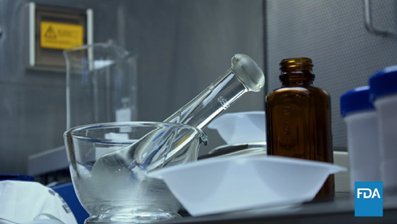The topic of this week’s #FDA #SUNDAYTWEETORIAL is #drugshortages. FDA does everything possible within our authority to help address shortages. While we’ve made progress to mitigate shortages; we must do even more to understand and address the root causes of persistent shortages
Manufacturing & quality issues are some of the proximate causes of drug shortages. Availability of raw materials; unexpected increases in demand, i.e. due to illness outbreaks or changes in clinical practice; or unavailability of other drugs in a class also can lead to a shortage 

We’ve seen # of new drug shortages steadily decline due to work by FDA, industry and others. In 2017, we worked w/ manufacturers to prevent 145 shortages. There were still 35 new shortages last year, but this compared to peak of 251 new shortages in ‘11 bit.ly/2JiNGpf 

Sterile injectables, which are critical for a wide range of medical treatments, are particularly at risk of shortage. Of the 35 new shortages in 2017, 26 were for sterile injectables drugs
Business decisions along the drug supply chain also can lead to shortages, e.g. decisions based on profitability, manufacturing costs, distribution quotas, patent life and company mergers. Many drugs in short supply have been low-profit generic medications bit.ly/2uwlnhJ
In 2012, in response the increase in drug shortages, Congress acted and gave #FDA new authority to help us prevent, mitigate and address shortages #FDASIA 

But #FDA’s authority is limited, e.g. we can’t require a company to produce a drug or increase production, even if it’s medically necessary; we can’t control how much of a drug is distributed; and many business decisions can affect supply of a drug 

Despite best efforts & impact of FDASIA, we continue to see ongoing shortages of medically necessary products. Even shortages of a small # of key drugs can place a serious burden on providers, threaten health care quality & create barriers to optimal care bit.ly/2mfrL9o 

Enduring solutions require collaboration. That’s why we announced the formation of a Drug Shortages Task Force including leaders from FDA, @CMSGov & DeptVetAffairs. We will examine #FDA’s current shortage authorities & also evaluate reimbursement policies go.usa.gov/xUKU9
Task force also will explore incentives to encourage expansion of manufacturing capacity & enhanced quality. FDA is already taking steps to support new technologies that can improve manufacturing, & help reduce the chance that supply disruptions will occur bit.ly/2KVnHdd
Patients expect and deserve high-quality drugs. While preventing shortages is a top priority, we must ensure quality standards are not compromised. The #FDA works with manufacturers and other stakeholders to resolve problems in a way that ensures patient access to vital drugs
Task force will look at whether a list of critical/essential drugs would be beneficial, where uninterrupted supply is esp. important from a clinical perspective & where we may consider more sig. interventions to avert shortages, as well as financial incentives for manufacturers
We’ll look at whether it could help to expand #FDA’s authority to require applicants of certain drugs to conduct a risk assessment to identify vulnerabilities in their supply chain that could cause a shortage & establish risk mitigation plans to proactively address weaknesses
New solutions will require input from industry, patients, federal partners. We appreciate lawmakers’ strong commitment to this issue. #FDA intends to engage the public and hold a meeting in coming months to bring together stakeholders to discuss shortage issue; identify solutions
As hurricane season is upon us, I want to note that #FDA monitors storms and identifies FDA-regulated facilities that could be impacted. If and when storms hit, FDA staff stand ready to work with manufacturers to prevent and mitigate any potential storm-related drug shortages
We've seen how comms b/w FDA & manufacturers helps w/shortages. For empty IV bags direct comms with suppliers after #PR resulted in firms ramping up production to mitigate supply constraints. Thanks, for example, to @DouglasMedProd for expediting production/shipment of empty bags 

We will continue to provide regular updates on our progress on shortage issues like these updates on FDA’s efforts to address specific shortages bit.ly/2yw0gkG and our efforts that target the root causes of drug shortages bit.ly/2J67htx 

• • •
Missing some Tweet in this thread? You can try to
force a refresh
















